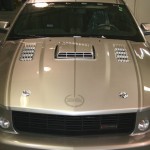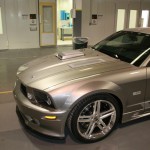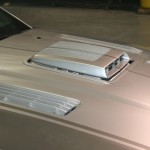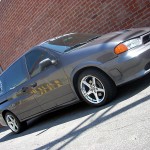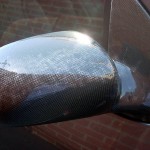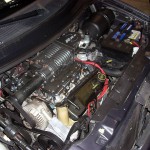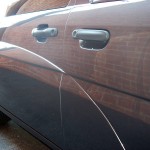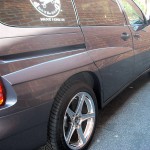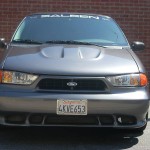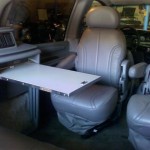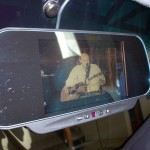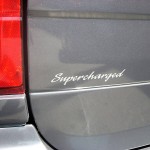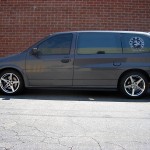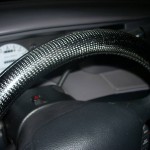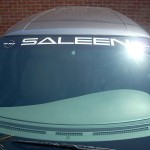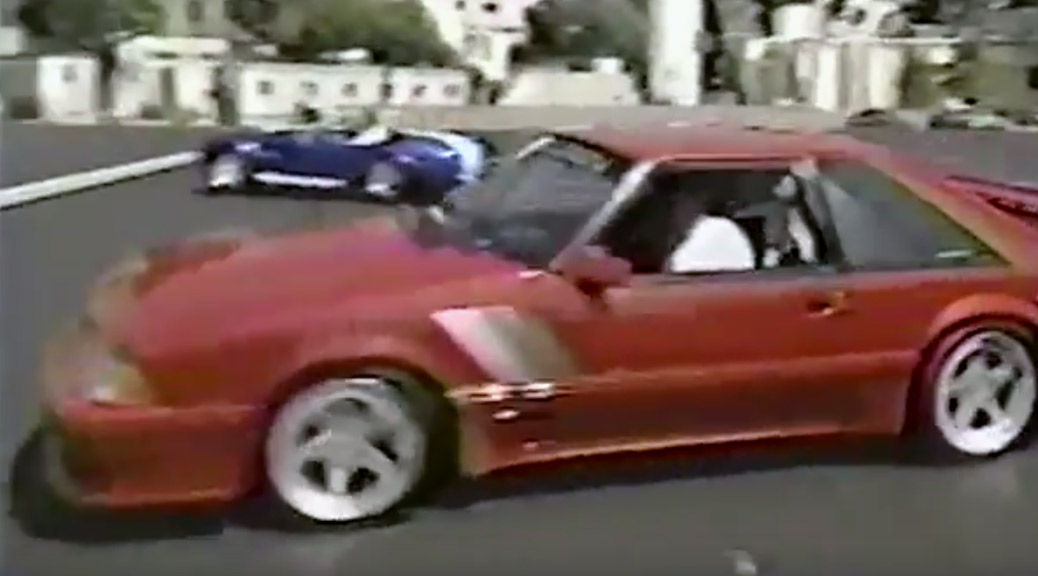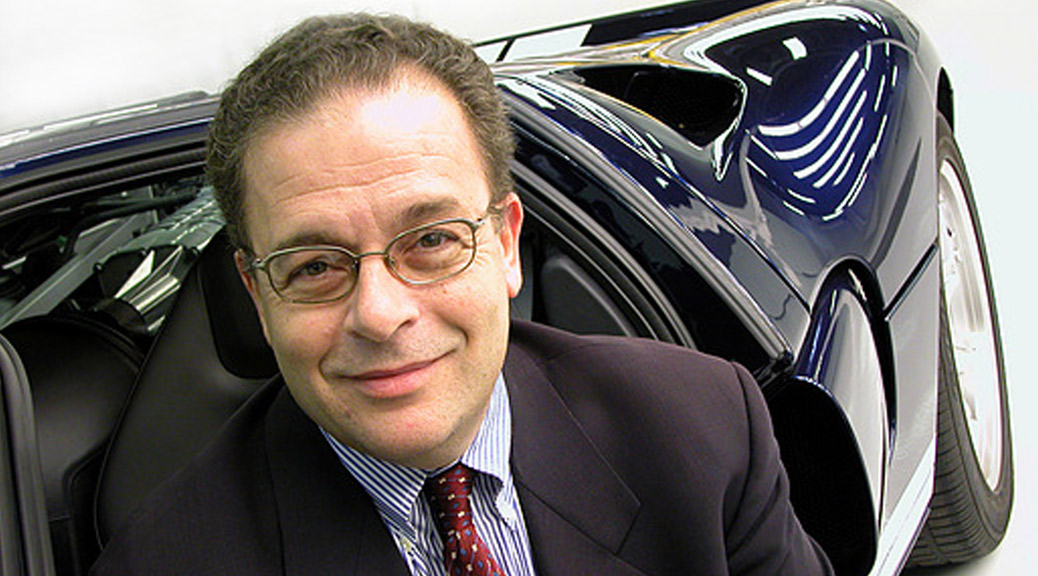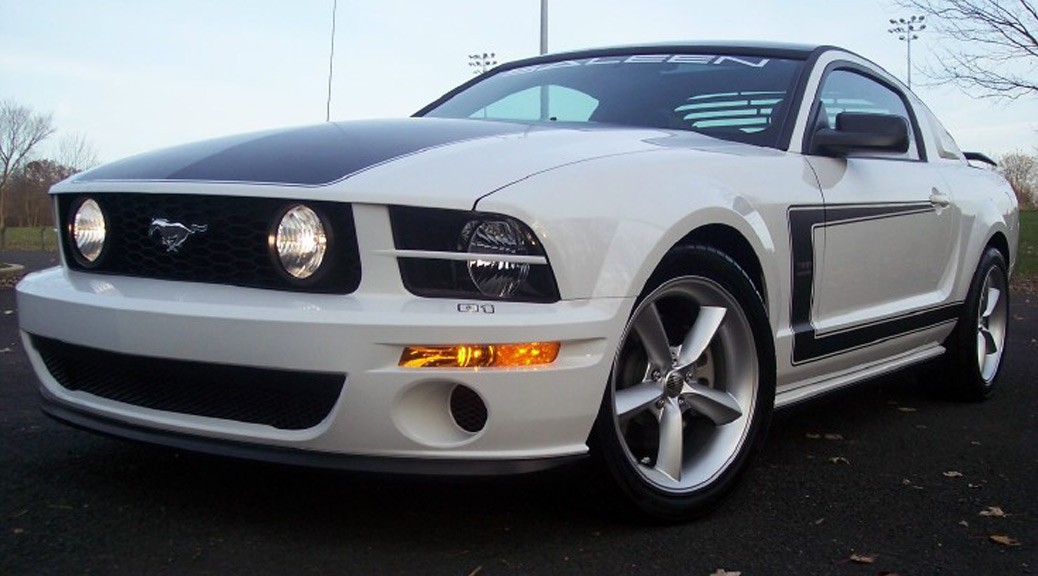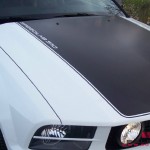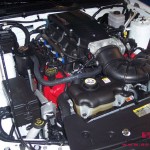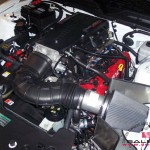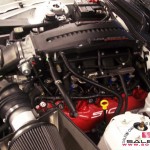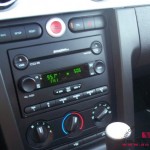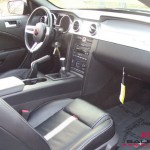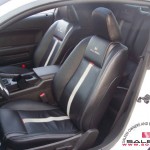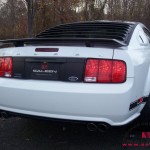Just thought I would share with everyone on here some pics of a Sterling Edition with a Super Shaker… Yes, I said Super Shaker! Let me know what you think.
Tag Archives: Saleen
1996 SALEEN / ALLEN RRR WINDSTAR SPOTTED ON eBay
Built as a design and show vehicle for comedian Tim Allen. The Saleen Windstar RRR features enhanced exterior, interior, suspension, braking and drivetrain. A few notable bits are: Carbon fiber interior & exterior accents, large caliper brake kit, supercharged V6 and a complete exterior restyle.
Click here to participate in the discussion.
VIDEO: TIM ALLEN BURNOUT CONTEST WITH JAY LENO – ROUND I
Published on Mar 27, 2016
Saleen SC 90-0012
(Jay challenges Tim to a burn out contest in the parking lot of NBC studios.)
Click here to participate in the discussion.
[Source: Saleen Owners and Enthusiasts Club via YouTube]
OPEN ROAD PODCAST DISCUSSES THE FUTURE OF SALEEN, INC
Mr. Black, Mr. White, and Mr. Blonde discuss the future of Saleen, Inc post Steve Saleen. What happened? Who is in charge? How did the ASC merger come to be?
They examine new ASC/Saleen product, review the recent Dan Gurney Edition, Sky-Vu Open Air System concept, Ford GT and the SuperShaker induction release during the Woodward Dream Cruise Open House in Troy, MI.
Click on this link to visit openroadpodcast.com and listen to the PodCast
[Source: Open Road Podcast]
UPDATE: H281 07-0001
Here’s a brief update on the 2007 H281 press car and production #01. [Previous Post]
Pat completed a Saleen Supercharger install with Brenspeed Stage III upgrade.
He also returned the trunk mounted “SALEEN” letters, added a Ford GT ignition push start, and went with a CDC 2nd series Glassback top.
The red valve covers pop and the engine call-outs on the hood have a nice modern throwback look.
Cheers Pat!
Click here to participate in the discussion.
FOR SALE: SALEEN AUTO
By: RICHARD TRUETT on November 10, 2008
Original Article: AUTOMOTIVE NEWS, VOL. 83 ISSUE 6333
Dateline: DETROIT —
Specialty car builder Saleen Automotive, which built the mighty GT for Ford Motor Co. and created dozens of high-performance classic Mustangs, is for sate. In a statement Friday, Saleen said it has hired an investment bank to explore selling the suburban Detroit company by early next year.
But a sale could be tough. Tight credit markets and the slump in auto sales have hurt specialty companies such as Saleen and ASC Inc. Further complicating matters is that one of Saleen’s biggest sources of revenue, the Dodge Viper sports car, has been put up for sale by its owner, Chrysler LLC. Company founder Steve Saleen quit in May 2007.
SALEEN AUTOMOTIVE SEEKING BUYER
IRVINE, CA — November 7, 2008 — SOEC/Saleen Forums News — Automotive News reported today that specialty car builder Saleen Automotive is seeking a buyer. The company has experienced trying times in an industry segment that has seen slow sales due to high gas prices and tougher financing.
“The [HPA] board has set a tentative timetable to receive preliminary indications of interest from prospective parties over the next two months and plans on finalizing a transaction in early 2009,” reports Automotive News.
Saleen Automotive has suffered from internal struggles in recent years. While founder Steve Saleen and other partners continue to own a substantial interest in the company, controlling interest was sold to investment group Hancock Park Associates in 2004 as part of the cash infusion needed to expand facilities for the Ford GT program. There was a surprisingly high turnover of their own CEOs who were brought from within the firm, but from outside the industry. Reportedly heads butted over the years, and eventually Steve Saleen left the company in May of 2007 with several key engineers. The three Saleen children, Clint, Sean and Molly, left just a few months later. Saleen’s wife Liz left the company in 2006.
Saleen Automotive’s CEO Paul Wilbur left in August of 2008, followed shortly by its General Manager Marques McCammon — both from ASC — and both ended up in a green car company in San Diego County. September saw additional departures of upper management as well as throughout the ranks as vehicle production stalled.
The sale of the company may be a tough order in these challenging times, as auto sales in general are slowed as financing is tight. Paint and partial assembly of the Dodge Viper are done at Saleen Automotive, but the uncertain future of that program complicates matters as Chrysler LLC considers selling that Dodge brand.
Saleen Automotive had been operated in California for nearly 25 years, but all production had been moved to Michigan in 2007.
SHOW CAR: RACE IS ON FOR THREE GENERATIONS
By: N.A. on October 18, 2008
Original Article: ADVERTISER, THE (ADELAIDE)
The Sporting Car Club of SA’s Peter Lehmann Wines SA Hillclimb Championship is on this weekend and three generations of an Adelaide family are lining up for the event.
Grandfather Tony Day, 61, will be competing in a Ford Mustang Saleen, his 38-year-old son Sean will be driving a two-door Subaru WRX STi and Sean’s son Daniel Day – a two-year motorkhana veteran – will be driving a rear-drive Toyota Corolla twin-cam, aged 14.
“It’s really good to have three generations involved, Dad is right into the Fords,” Sean Day said.
Defending champ Peter Gumley will be back from NSW in his purpose-built Wortmeyer SCV hillclimb vehicle which holds the outright course record at 29.64 seconds. Among the 90-plus entries are local drivers Andrew Mitchell in a turbocharged Shrike, and Andy Ford’s Reynard Honda open-wheeler.
The two-day event takes place on the Collingrove Hillclimb circuit, 9km south of Angaston on the Eden Valley Rd. Competition commences at 9.45am today and tomorrow; admission is $20 per car or $10 per person.
SALEEN DARK HORSE
By: MARK VAUGHN on October 13, 2008
Original Article: AUTOWEEK, VOL. 58, ISSUE 41
Yet Another Limited-Edition Mustang
Despite numerous executive departures from Saleen in the last month or two, the company is still making new products. This one could be the last special-edition Mustang… until the reskinned, reengineered 2010 Mustang debuts at the Los Angeles auto show in November with a corral full of them.
The Saleen Dark Horse Extreme Edition follows on the heels-or is it the hooves?-of the Sterling Edition and Gurney Signature Edition Mustangs from Saleen. The Dark Horse offers the same impressive supercharged 620 hp as the Sterling, but comes wrapped in its own sinister black exterior. Under the SuperShaker hood scoop is a 302-cubic-inch Ford V8 with Saleen port-matched Series VI integrated screw-type supercharger, forged-aluminum pistons, forged-steel connecting rods and a forged-steel crank. The hood scoop supposedly delivers 0.5 psi of boost all by itself.
Saleen will make only 25 Dark Horses, as many as five of which will be convertibles. Sticker price is $89,995. They go into production in November, with sales starting that same month.
If you don’t have $90,000 of disposable income, consider Saleen’s Racecraft division. A Racecraft 420S offers 420 hp and a few other amenities for “just” $38,000.
Even more affordable will be the coming Racecraft Focus, expected shortly after the new production Ford Focus debuts in 2010. The Racecraft version will come in a normally aspirated version with handling and cosmetic improvements for $20,199, while the turbocharged version will offer “between 200 hp and 250 hp” for between $23,000 and $24,000. Production plans call for 50 to 75 a month, all of them 50-states legal.
SO REAL, LAMBO WANTS TO PLAY
By: DAN EMERY on October 5, 2008
Original Article: SUNDAY TIMES, THE
Car makers are working with game designers to preview future models, writes
Dan Emery
Car manufacturers have long seen driving video games as little more than a source of revenue. While they beg Hollywood to use their vehicles in blockbuster films – and in some cases pay millions of dollars for the privilege – when it comes to gaming it’s the other way around: games companies must pay royalties for any car featured – as much as Pounds 1 for every game sold.
However, that relationship could be changing: a street-racing game, Midnight Club Los Angeles, is set to break new ground when it is released this month by being the first to feature close collaboration with top marques such as Lamborghini, Dodge, Chevrolet and Saleen, the US car customiser.
Not only have the car makers waived their demand for a fee, but they have also offered players a glimpse of what cars could look like well before they officially launch. The companies are even exploring the possibility of incorporating gamers’ feedback into real-life designs.
Midnight Club – which challenges players to race around the streets of LA, winning cash prizes that can be used to “pimp” their cars or buy new ones – features more than 40 vehicles. Two of these – a Dodge Challenger SRT8 and a Chevy Camaro – were still concepts when work started on the game, and are not due on the forecourt until next year, meaning that players of the game will be the first members of the public to test-drive them, albeit in a virtual environment.
Lamborghini, which prides itself on cloaking new models in secrecy, has supplied data for its Miura, Gallardo Spyder and Murcielago models. “Video games are part of our brand expansion programme,” says Maria Lucia Lazzarini, licensing manager at Lamborghini.
“In the old days, children used to play with diecast toys, today they also play video games. There’s a real satisfaction for us in knowing that our cars are the most desired by the games industry, that people dream about owning or driving a Lamborghini.”
Cars have featured in video games since the 1980s, but it wasn’t until the 1990s that players began getting realistic representations of cars that were for sale. Games makers would use CAD (computer aided design) files detailing the entire vehicle – although they also relied on pictures of the car photographed from many different angles. Next, all the extras were added, from sound effects (created by hanging microphones in the exhaust and interior) through to fine detailing such as the wheel rims, hubs and internal trim. Small wonder that it costs between Pounds 10,000 and Pounds 15,000 to make each in-game car.
This process reaches new heights of realism in Midnight Club Los Angeles, the fourth game in the series, which puts you in numerous races and challenges in central LA.
Not only do the in-game vehicles look the part, but their handling is equally realistic, says Mark Garone, the game’s lead producer.
“The software at the heart of Midnight Club turns the game into a full-blown simulation. Each vehicle has a full set of test data – pitch, roll, 0-60mph times, tyres, you name it. Sometimes we get that data direct from the manufacturers; for older cars we have to comb automotive magazines, websites or the library,” he says.
It’s not just the cars that are realistic; players can customise their chosen ride with real-world accessories such as nitrous oxide injection systems and Wings West carbon-fibre kits.
The game’s driving challenges are varied, from basic point-to-point races through to time trials and circuit races. Competing in these races nets you cash and reputation points. The gameplay is slick and polished, seamlessly switching between general driving and racing.
The designers take some liberties. “Although we try and keep it realistic as much as we can,” says Garone, “we do start tweaking when the performance impinges on the fun. In Midnight Club, you can drive up to 240mph round the streets. Try that in real life and you’ll die.”
Marques McCammon, general manager of Saleen, is impressed with the game and says “the cars just feel right”. He’s also enthusiastic about the idea of using a game to test a prototype design, as Lamborghini is.
For this to happen, however, a new system would have to be put in place to gauge players’ reactions – at present it involves manufacturers trawling through fan-boy bulletin boards and specialist websites.
Midnight Club Los Angeles is out for the PS3 and Xbox 360 on October 24, price Pounds 44.99.
BUILDING A VIRTUAL RACE CAR
During the early stages of a game’s design, artists rough out the required cars and their accessories. Then computer-aided design (CAD) files supplied by manufacturers add the fine details of the real-life cars – in the case of this Ford Mustang minus the spoiler imagined by the game designer
The CAD wireframes provide a skeleton over which the game designers can add a ‘solid’, three-dimensional skin. After weeks of detailed, highly accurate work costing up to Pounds 15,000, the completed version of the in-game car is ready to be raced by gamers.

